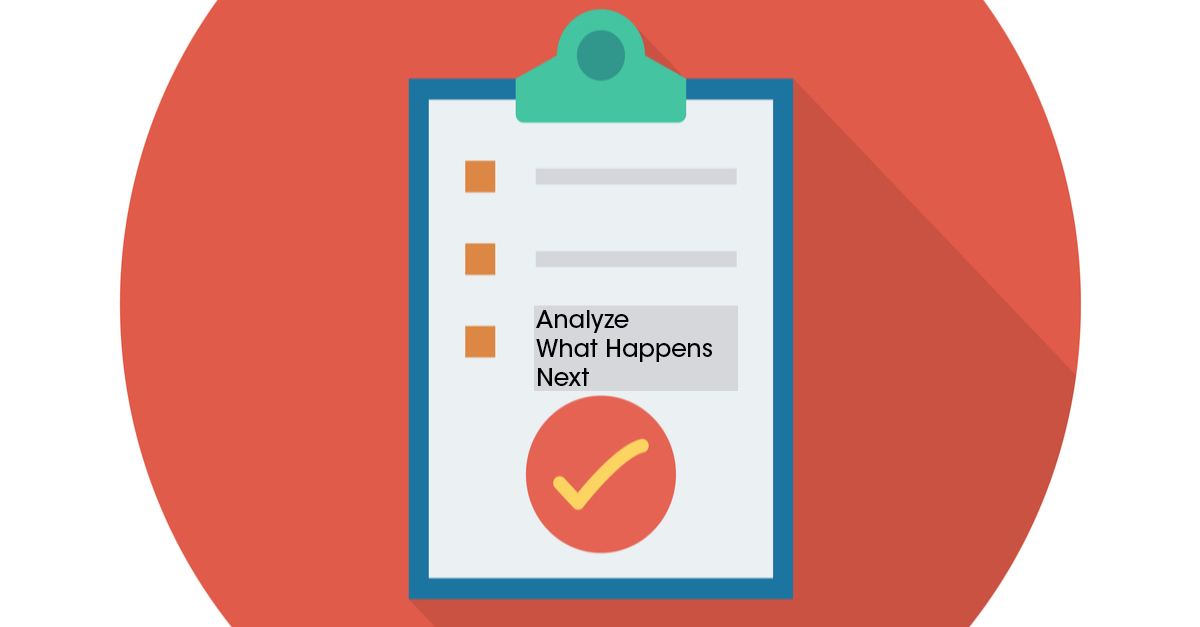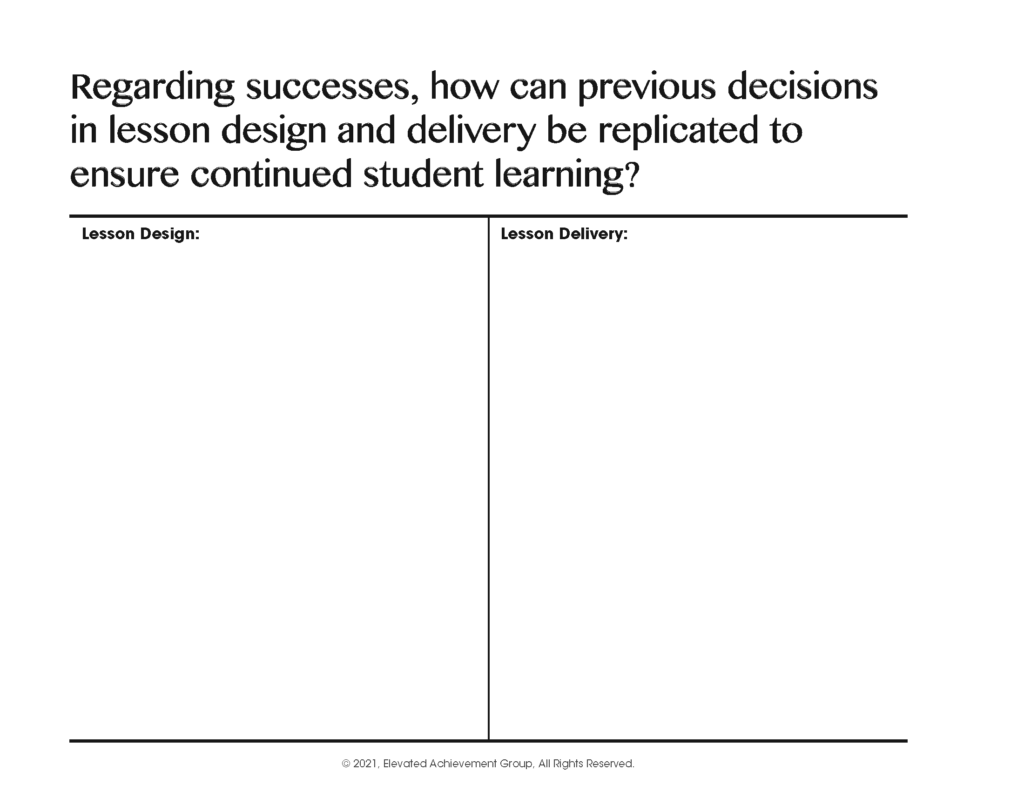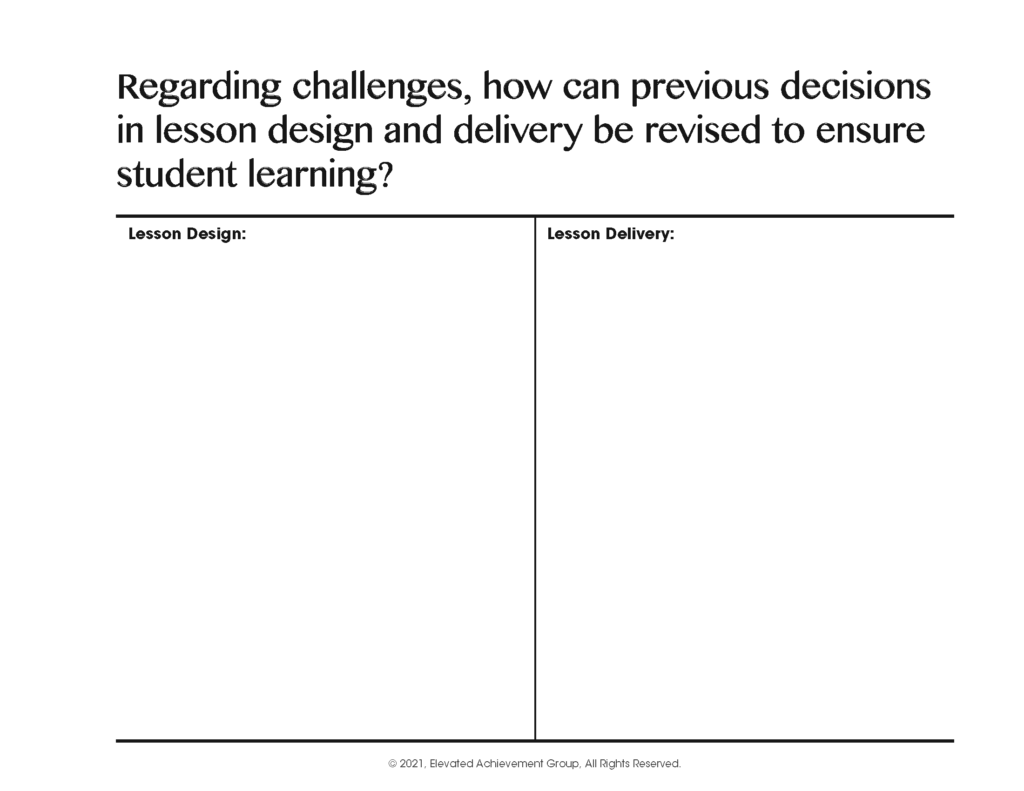Share this article.
When looking at the needs of our students throughout year, it is important that we identify the skills they have mastered, the skills they still need to master, the reasons why they might have mastered these skills, and the reasons why they might not have mastered these skills. Once we have determined that, we can begin teaching or reteaching. That’s the value of monitoring student learning—it’s not an end to learning but a beginning. And the data helps us determine where to begin.
“If assessments provide information for both students and teachers, then they cannot mark the end of learning. Instead, assessments must be followed by high-quality, corrective instruction designed to remedy whatever learning errors the assessment identified.” (Guskey, 2003)
A reflective data analysis protocol will help you when it comes to reteaching to the specific needs of your students. That’s why we’ve provided this series of articles that explain, step by step, what a reflective data analysis is, how to implement it, and why it’s valuable for your students.
We began the series with an article that introduced a reflective data analysis protocol. And, then continued the series with a focus on each of the three steps:
IDENTIFY: What Happened
-
- What were the students demonstrating?
- What were the students’ successes and challenges?
REFLECT: Why It Happened
-
- How did the format impact student demonstration of learning?
- How did previous decisions in lesson design and delivery impact student demonstration of learning?
IDENTIFY: What Happens Next
-
- Regarding successes, how can previous decisions in lesson design and delivery be replicated to ensure continued student learning?
- Regarding challenges, how can previous decisions in lesson design and delivery be revised to ensure student learning?
In other articles, we provided an in-depth look at the first step—IDENTIFY: What Happened and an in-depth look at the second step—REFLECT: Why It Happened.
Now let’s take a deeper look at the third step…
IDENTIFY: What Happens Next
Author’s Note: Before identifying what happens next, make sure you’ve determined the success and challenges as shown in the data analysis during the first step—IDENTIFY: What Happened. And, make sure you’ve reflected on the possible reasons why—both looking at format and previous instructional decisions during the second step—REFLECT: Why It Happened.
Now, we are ready to develop a reteaching plan. And our plan must include those decisions that supported success and must include solutions to those decisions that hindered success.
ASK: Regarding successes, how can previous decisions in lesson design and delivery be replicated to ensure continued student learning?
Below is a graphic to help you reflect on the lesson design and lesson delivery when students were successful. What decisions did you make that helped them master that skill? These are the decisions you will want to replicate for future teaching and learning.
Click here to download a blank copy for you to use for your students.
ASK: Regarding challenges, how can previous decisions in lesson design and delivery be revised to ensure student learning?
Below is a graphic to help you reflect on the lesson design and lesson delivery when students were less successful. What decisions did you make as they attempted to learn that skill? These are the instructional decisions you will want to revise for future teaching and learning.
Click here to download a blank copy for you to use for your students.
Plan for Continued Student Learning
After you have identified decisions that were supportive and those that were not, you will begin to think about what needs to happen next. Design your lesson using a focused Learning Model. This will ensure that you offer all the supports research shows students need.
Here are two examples of a reteaching lesson.
Click here to download a blank copy for you to use for your students.
So, What Now?
Use these three steps—IDENTIFY: What Happened, REFLECT: Why It Happened, and IDENTIFY: What Happens Next—to help you determine the most effective and efficient reteaching plan.
Continue the Learning
Check out these articles and resources to continue your learning about this topic…
The Learning Brief
In this article you learned…
- The most effective data protocol is one that has a built-in process to analyze why students did or did not learn what they needed to because it will help you when it comes to reteaching to the specific needs of your students.
- A reflective data analysis protocol includes 3 steps: Identify what happened, reflect on why it happened, identify what happens next.
- That once you have analyzed what happened and why, you are ready to develop a reteaching plan that includes those decisions that supported success and must include solutions to those decisions that hindered success.
Can you imagine building an environment full of motivated, engaged, and eager students who own their learning?
We can.





